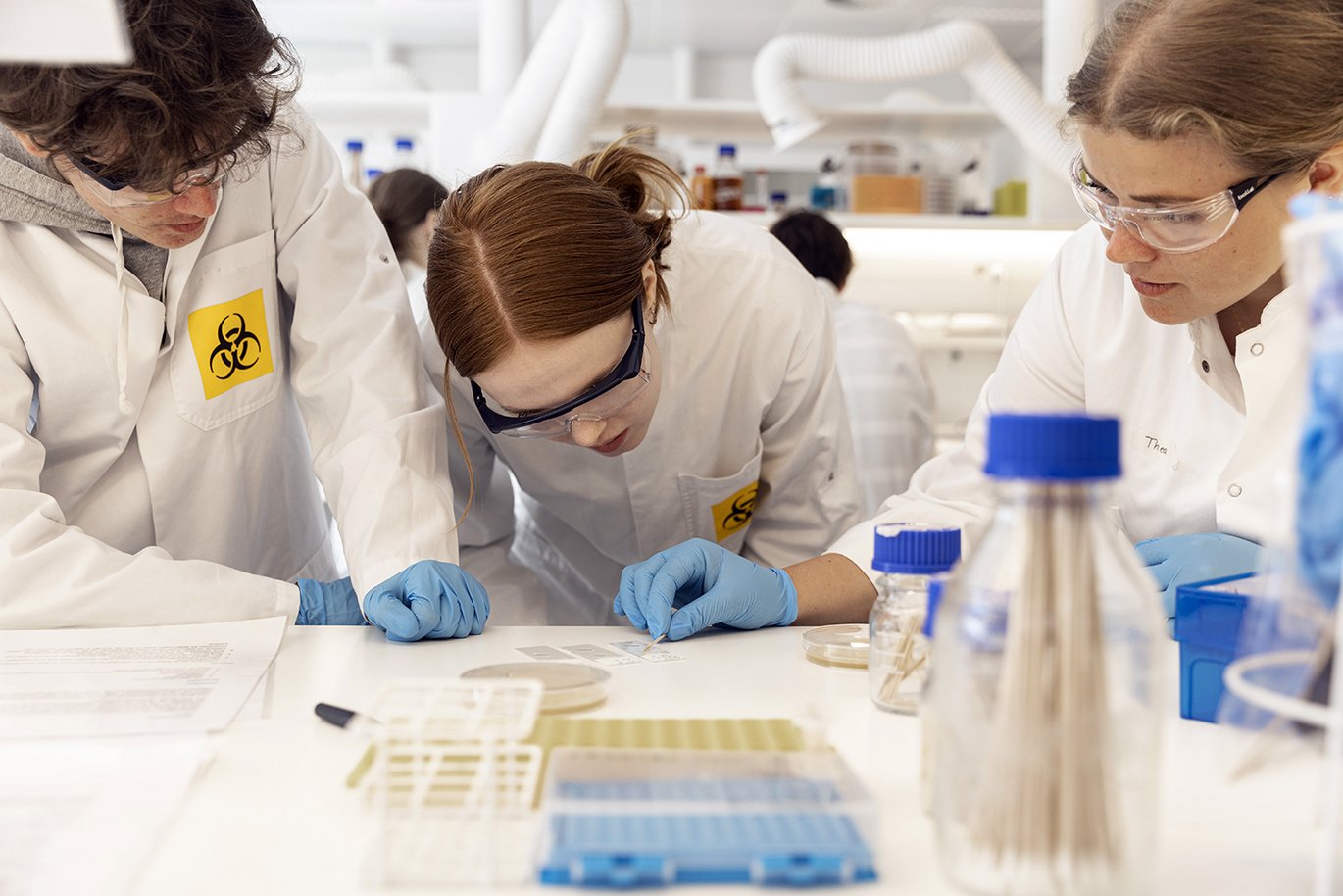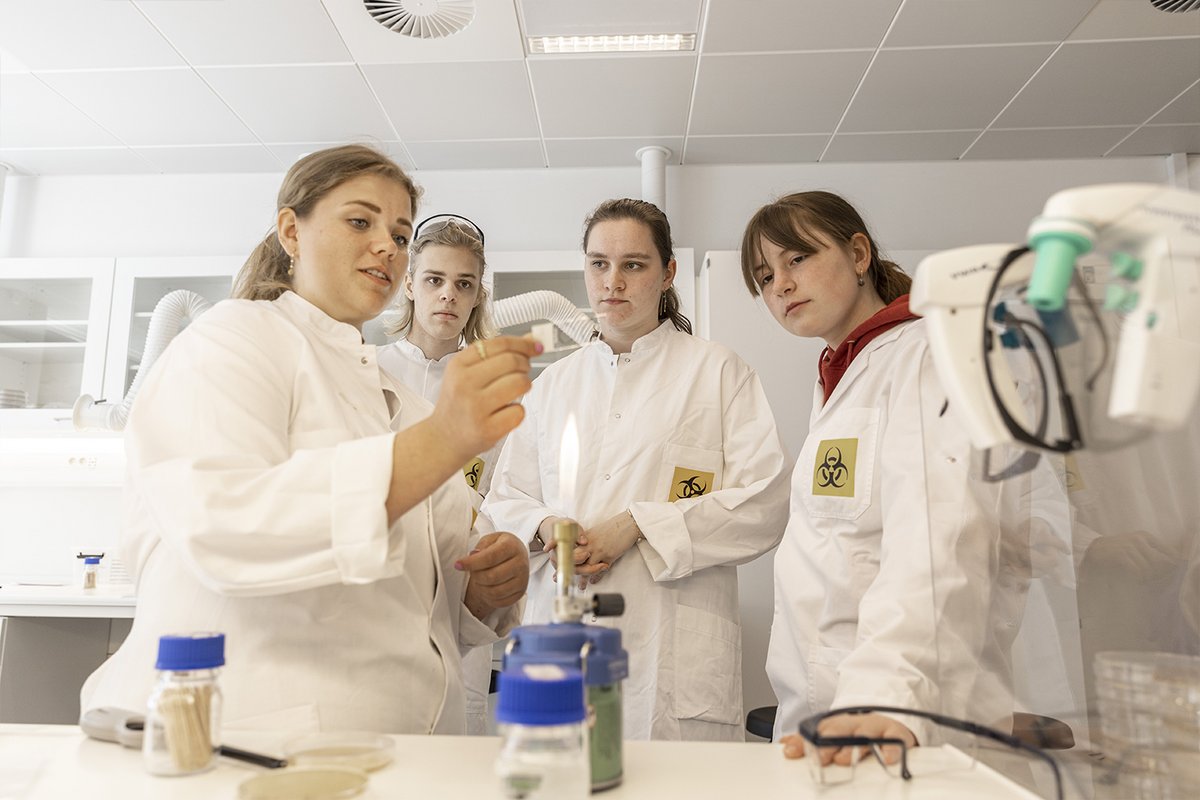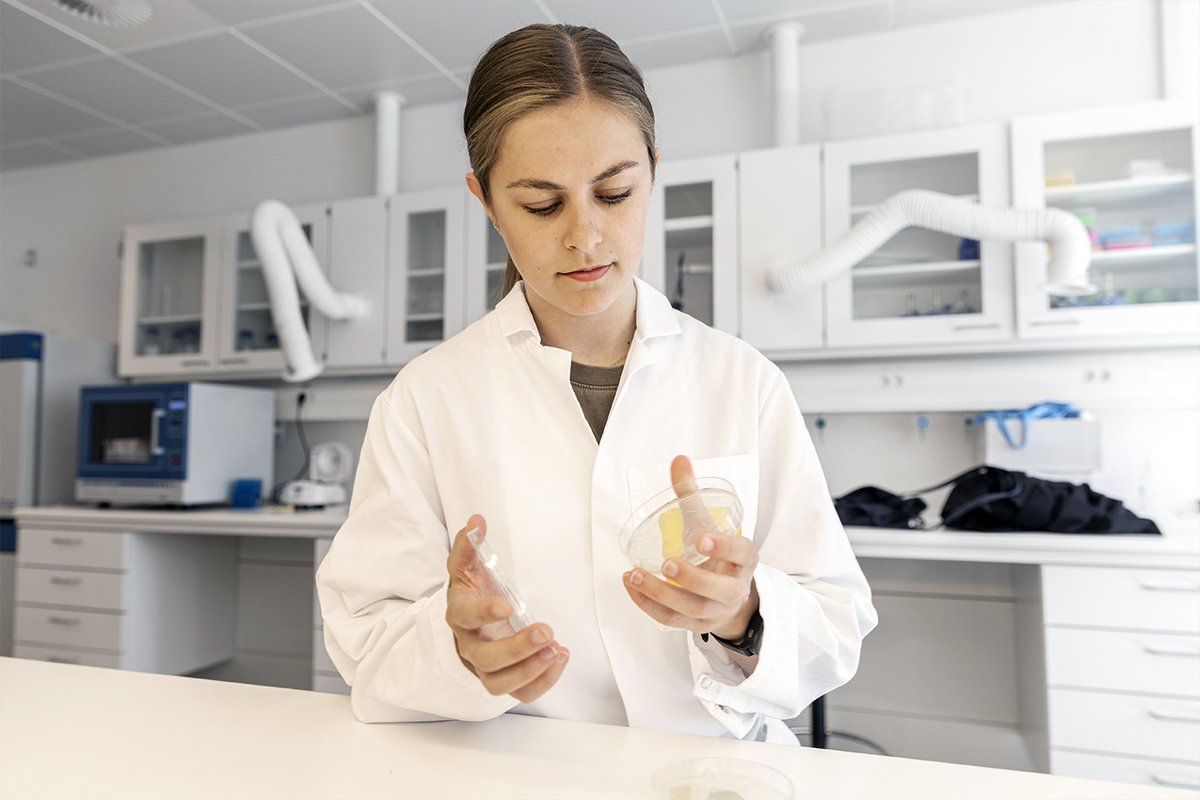Pupils in global research project: Teaching gets an extra dimension
In the world-wide project Tiny Earth, pupils at upper secondary schools, as well as university students and researchers, are working together to find solutions to a major shared challenge: antibiotic resistance. The project is also generating learning and motivation on several levels according to two of the participating school teachers and a Bachelor's degree student.

The framework of the Tiny Earth project, in which upper secondary schools, university students and researchers are working shoulder-to-shoulder, is one of the biggest health challenges of our time. The aim is to find new antibiotics, but learning, motivation and perhaps even increased interest in the natural sciences are among the positive by-products. 700 upper secondary school pupils from all over Denmark have already participated in the global research project, the Danish component of which is headed by engineering researchers at Aarhus University (AU).
"Pupils' learning is proportional to their commitment, and they have learned a lot in this project. The theoretical material is very well written and coherent; it includes everything we have to look at in microbiology, and it is spot-on with the academic level. There has been a 100 percent match between theory and practice," says Jens Gregersen, who is a biology and biotechnology lecturer at Skive Gymnasium.
Core material developed in close collaboration with the university
In January this year, Jens Gregersen and his third-year upper secondary class worked on Tiny Earth as part of their biology course. First, they collected soil samples, and then they purified and cultivated these under expert guidance from two of the project's teaching assistants, who are recruited from the civil and diploma engineering programs in biotechnology at Aarhus University.
(The article continues below the picture)

In the following weeks, they selected bacteria to investigate further for antibiotic production. They brought these for further investigation at the workshop at the university laboratories in the University Park in Aarhus.
"In Aarhus, we were greeted by a team of skilled and competent teaching assistants who seemed to be really committed to what they told us. And there were plenty of them, so none of our pupils had to wait,” says Jens Gregersen, and continues:
“The final results were processed online, and this tied it all together. When our pupils uploaded their results to the worldwide database, they became part of something larger that could ultimately make a big difference. And that did something for their commitment.
(The article continues below the picture)

Line Vestergaard Heuck teaches at Aarhus Gymnasium in Skanderborg, and she has had two classes in the project, most recently in the spring, when a second-year class participated as part of their biotechnology course.
"It's my experience that taking part in a project like Tiny Earth can be a huge motivating factor. The pupils could watch the bacteria grow on their own plates, and they were so absorbed that they almost gave the bacteria names. When they finally entered their results into the shared database, they found that they had become part of something worldwide, and this also helped motivate them. However, what motivated them the most was that the samples they were working with throughout were their own. They had a sense of ownership," says Line Vestergaard Heuck.
She has also found that Tiny Earth fits in very closely with the curricular for upper-secondary schools, which include a requirement that pupils acquire insight into the career opportunities arising from the course.
"Tiny Earth has a very strong career-learning aspect, because our pupils go out and experience how people work in a research field. They experience the University Park, they can talk to university students studying for their engineering degrees, and they find out that Bachelor’s students will continue to work on their samples in the laboratory. I think all this can help stimulate a greater interest in the subject and encourage pupils towards the natural sciences," says Line Vestergaard Heuck.
More interest in the natural sciences
Maria Kongsbak Mathiasen, who is working on her Bachelor's project on the BSc in engineering programme in biotechnology, is one of the students who has worked on the upper secondary pupils’ samples in Tiny Earth. More specifically, she has focused on the Burkholderia bacterial group, which was found in the autumn by pupils from Aarhus Gymnasium in Skanderborg.
(The article continues below the picture)

"In my Bachelor's project, I’ve been working in particular to get the bacterium to produce antibiotics in a liquid medium, so that we can extract and analyse what kind of antibiotics it produces. It’s been very exciting, and I’ve succeeded,” says Maria Kongsbak Mathiasen, who has spent a lot of time in the laboratory in connection with her Bachelor's project and Tiny Earth.
"With Tiny Earth, we’re part of a research effort taking place all over the world, and it's really exciting. We haven’t found any new antibiotics for a long time, and that’s a really big problem. It’s great to be part of the solution," says Maria Kongsbak Mathiasen, who will be submitting her Bachelor's project in June. However, she won’t be leaving Tiny Earth entirely. She has just got a job as a lecturer in the project.
"To me, it's an exciting challenge to explain my subject to someone who doesn't know anything about it already and to get upper secondary school pupils to engage in it. It's important to get the young people to take an interest in the natural sciences, so that we get more researchers and engineers," says Maria Kongsbak Mathiasen.
| ABOUT TINY EARTH |
The Tiny Earth project at Aarhus University is being supported by the Novo Nordisk Foundation with DKK 4.3 million. The project is headed by Associate Professor Thomas Tørring and Frederikke Dybdahl Andersen from the Department of Chemical Engineering and Biotechnology. Besides upper secondary school pupils, the project also includes engineering students at the university and it is part of their degree programme. Tiny Earth was launched in June 2018, and it is a global crowdsourcing initiative bringing together researchers, teachers and students at different educational levels to find new antibiotics in nature around the world. Tens of thousands of students from 23 countries are currently participating in the project. |
Contact
Jannie True Hansen
Communication consultant
Mail: jth@au.dk
Tel.: 93522789
Associate Professor Thomas Tørring
Department of Biological and Chemical Engineering
Mail: thomast@bce.au.dk
